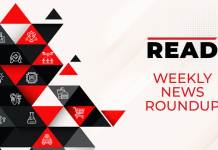With CEOs striving to find growth through direct digital connections with customers, CIOs’ priorities must reflect the same business imperatives, which run through each of the top strategic tech trends for 2022.
The increasing speed of technology change has created tremendous opportunities (and pressure) for IT leaders to align with business priorities. However, I&O teams consistently struggle with staying relevant in the fact of major business changes.
CIOs need to find the IT force multipliers to enable growth and innovation, and create scalable, resilient technical foundations whose scalability will free cash for digital investments. These imperatives form the three themes of this year’s trends: engineering trust, sculpting change and accelerating growth.
The strategic technology trends for 2022 could be identified as:
Generative Artificial Intelligence (AI)
One of the most visible and powerful AI methods on the market is a generative AI – machine learning methods that learn content or objects from their data, and use them to produce brand new, completely real, realistic objects.
Generative AI can be used for a variety of tasks such as software coding, aids drug development and targeted marketing, but it can also be used for scams, fraud, political falsehoods, fraudulent identity and more. This will increasingly gain traction in the coming year.
Data Fabric
The number of data and app residues has grown significantly over the past decade, while the number of skilled workers in data and statistics (D&A) teams has remained the same or decreased. Data cables – flexible, robust data integration for all forums and business users – have emerged to facilitate the organization of data integration data and create slower formats that reduce the technical debt that is evident in many D&A teams due to growing integration challenges.
The real value of the data fabric is its ability to dynamically improve data usage with its built-in statistics, cutting data management efforts by up to 70% and speeding up value.
Distributed Enterprise
With the growth of long-distance and mixed-use patterns, traditional office-based organizations are shifting to distributed businesses made up of geographically dispersed workers. This requires CIOs to make major technological changes and services to bring about a non-conflict work experience, but there is another side to this coin: the impact on business models. For every organization, from marketing to education, their delivery model needs to be redesigned to accommodate distributed resources. The world could not even imagine they would try on clothes and makeup digitally, two years ago.
Decision Intelligence (DI)
Organizational decision-making can be an important source of competitive advantage, but it is fast becoming a must-have, rather than a good-to-have.
Decision intelligence can be used to deliver improved decision-making, by clearly understanding and engineering how decisions are made, and the results analyzed, managed and developed in response. Researchers predict that in the next two years, a third of large corporations will use their discretionary decision-making skills to improve competitive advantage.
Privacy-Enhancing Computation (PEC)
In addition to tackling growing international privacy law and data protection, CIOs should avoid any loss of customer confidence caused by privacy incidents. Therefore, it is expected that 60% of large corporations will implement one or more privacy measures by 2025.
PEC strategies – protecting personal and sensitive information from data, software or hardware level – securely share, integrate and analyze data without compromising privacy or confidentiality. Current operating conditions exist in many specific locations and public cloud infrastructure (e.g., trusted sites).
Cybersecurity Mesh
The data is fixed in all styles this year, but it is only useful if businesses can trust it. Today, goods and consumers can be anywhere, which means that the traditional protection limit is no longer there. This requires cybersecurity mesh architecture (CSMA).
The CSMA helps provide an integrated security structure and security environment for all assets, regardless of location. By 2024, organizations adopting the CSMA to integrate security tools to act as a collaborative ecosystem will reduce the financial impact of individual security incidents by 90%.




